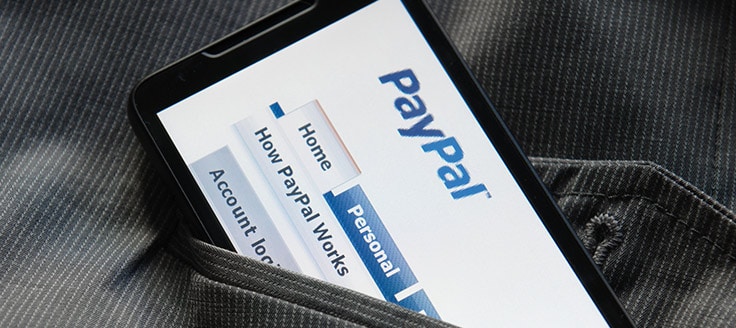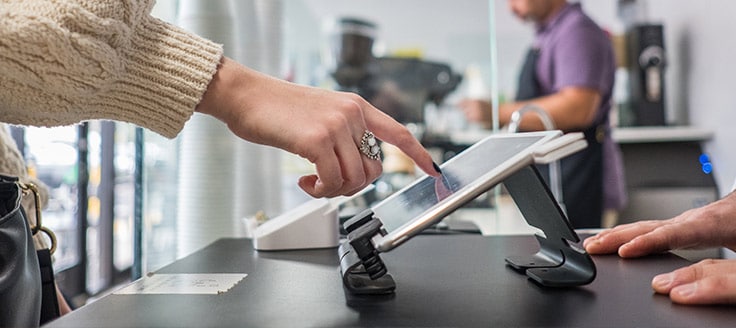Any type of business — from a strictly brick-and-mortar outfit to an ecommerce site or a hybrid — can accept credit card payments. Whether you’re getting ready to launch a new business or are shifting away from being a cash-only enterprise, we’ll show you how to set up the credit card payment process and determine the best service providers for your small business.
Set Up Your Business to Accept Credit Card Payments
Before you decide the best way to accept credit cards for your small business, consider the following:
Your Business’s Structure
Is the majority of your business handled at a brick-and-mortar location, or are you an online-only operation? Or do you have a near-equal amount of transactions from online and in-person sales? Some payment service providers, for example in the Stripe vs. Square debate, have a clear reputation for better serving physical business spaces compared to accepting payments online for small business customers and vice versa.
Number of Transactions
Credit card payments for a small business come with various fees you’ll have to pay. Weigh your current amount (and potential future increases) of credit card transactions to help you decide what you can best afford before you sign any contracts.
Merchant Account vs. Payment-Service Provider
There are 2 primary ways to accept credit card payments — merchant accounts and payment service providers.
Merchant Account
A merchant account is a particular type of bank account for holding deposits. Money from the credit card purchases goes into the merchant account first, then to your bank account.
There are many merchant account providers, ranging from banks, payment processing companies and independent salespeople or organizations. Some allow you to sign up for a merchant account online. For others, you’ll have to call a sales representative to work out a contract.
Keep the following points in mind:
- Most merchant account providers supply you with countertop credit card terminals. Others will provide additional equipment such as an ecommerce payment setup and mobile card readers.
- Merchant accounts come with a lot of fees. These include setup fees, monthly fees, processing fees, early cancellation fees, software/equipment fees and many others. Some providers might not disclose these costs upfront.
Your merchant account will come with a unique merchant identification (MID), a code that will be transmitted when you’re accepting credit card payments for your small business.
Payment Service Provider
Payment service providers (PSP) include companies like PayPal, Square, Shopify and Stripe. A PSP or payment processor permits business owners to accept card payments without having a separate merchant account. Instead of a unique MID, PSP customers have a sub-account under a single MID. While this expedites the setup process, it does have a potential drawback. Your business’s payment processing ability is tied to other small businesses that share the MID. If other businesses under your MID have “bad behavior,” such as fraud, your ability to accept credit card payments might be denied.
However, the collective nature of payment service providers has a benefit. Products aren’t tailored to each customer, so the fee structures are simpler than merchant accounts.
As another potential draw, some point-of-sale (POS) systems have capabilities that go beyond accepting credit and debit card payments. For example, Stripe and Square have optional packages such as managing employees, tracking inventory, depositing money into a bank account and accepting payments when not connected to the Internet.
Remember, no matter which merchant account or payment service provider you choose, carefully read your contract to ensure you understand the terms of service and fees.
Ways to Accept Credit Card Payments
Let’s explore ways to receive credit card payments.
Accepting In-Store Card Payments
For a brick-and-mortar shop, you’ll need to have either a POS terminal or a merchant account and a conventional credit card terminal to accept credit card payments.
Regardless of which system you choose, your customer will either dip, swipe or tap their card to set off the payment process.
Accepting Payments Online for a Small Business
Instead of a POS system or countertop credit card terminal, you need a merchant account and payment gateway to accept credit card payments online. You can get a payment service provider with a 2-in-1 service in addition to your e-commerce store.
As an alternative, some payment service providers offer virtual terminal applications for laptops and computers in which you manually enter a customer’s credit card information to process the transaction.
Accepting Credit Card Payments via Phone or Tablet
Mobile credit card readers that work with your tablet or phone are the best options for accepting credit card payments if you’re a mobile business owner (such as a house-to-house massage therapist, food truck owner, flea market vendor, etc.).
Many payment service providers offer free or cheap mobile credit card readers and apps that accept swipe and chip cards.
Accepting Credit Card Payments: Types of Processing Fees
Accepting credit card payments isn’t free — and, in some instances, the fees can be steep.
How much you pay depends on the equipment you use and your payment processor. However, there are 2 unavoidable costs: the interchange rate and the markup fee.
Interchange Rate
Major credit card companies (MasterCard, Visa, American Express, Discover, etc.) charge an interchange rate or a “swipe fee” for using their products. The issuing bank receives the interchange rate from your merchant account. (e.g., If a customer has a TD bank Visa card, TD will accept the interchange rate.) Each company has a different interchange rate. Also, there are different levels of risk depending on how credit cards are used.
For example, an online transaction is more susceptible to fraud compared with an in-person transaction. Why? It isn’t as easy to verify a customer’s identity online as it is in person. If you are in an industry considered riskier than others, you will likely be charged a higher fee.
Markup Fee/Interchange Plus Plans
In addition to the interchange rate, payment processors charge markup fees. (e.g., 2.6% + 10 cents per transaction). It’s how companies generate some profit from credit card transactions.
The risk of fraud tied to every transaction usually determines the markup rate for different payment processors.
However, payment plans are a factor, too. Here are some of the available payment plans:
Tiered Plans
For tiered plans, a processor charges different fees depending on the type of card transaction. The higher the risk, the higher the fee.
What determines risk?
- The credit or debit card type will fall into different risk categories. For example, the lowest risk or “qualified” cards include debit and non-rewards credit cards. These transactions are assigned lower fees. Corporate or rewards cards fall on the higher end of the rate/risk spectrum.
- The payment method. Transactions made online or over the telephone are considered higher risk than in-person payments because it’s more difficult to confirm the user’s identity.
Flat-Rate Plans
Many payment service providers offer flat-rate payments. Under these plans, you pay a fixed charge processing fee every time you make a transaction.
Transparent and consistent flat-rate plans help small businesses to plan their budgets better for credit card fees.

What are the Cheapest Ways to Accept Credit Card Payments?
There isn’t a single cheapest option for accepting credit card payments. However, doing your research and finding a provider who will give your small business reasonable interchange pricing is a cost-effective method.
Also, check for special offers from your payment service provider. International payment processors such as Stripe and PayPal may have offers, too.
It is important to note that cheap isn’t always safe. A few factors to consider:
- Choose a payment gateway that is payment card industry (PCI) compliant
- Integrate all your payments
- Avoid tiered pricing and go for a flat rate
- Beware of mandatory contracts and hidden fees.
Why Should You Accept Credit Card Payments?
Credit Cards Are the Top Payment Option
If you don’t already have options for accepting credit card payments, you’re running behind customers’ new reality. Credit and debit cards are the top 2 payment methods U.S. consumers used in 2020, with credit card payments used in 38% of transactions and debit cards used in 29% of transactions, according to Statista. Cash is the third most-used payment method.
Consumers Spend More with Credit Cards
Another reason for a small business to accept credit cards is that study after study has found that consumers spend at least 12% more when paying with a credit card vs. cash.
COVID-19 Compelled Credit Card Payments for Small Business
Non-cash payments are playing a vital role as U.S. businesses and customers continue to navigate the COVID-19 pandemic. Worried about transmitting the virus through cash exchanges, many businesses asked or required customers to pay with credit or debit cards. From January to August 2020, The State of Retail Payments study reported contactless payments were up 69% for responding retailers. More than half of U.S. shoppers (62%) in 2020 said they shopped online more than they did pre-pandemic, according to Bazaarvoice.












